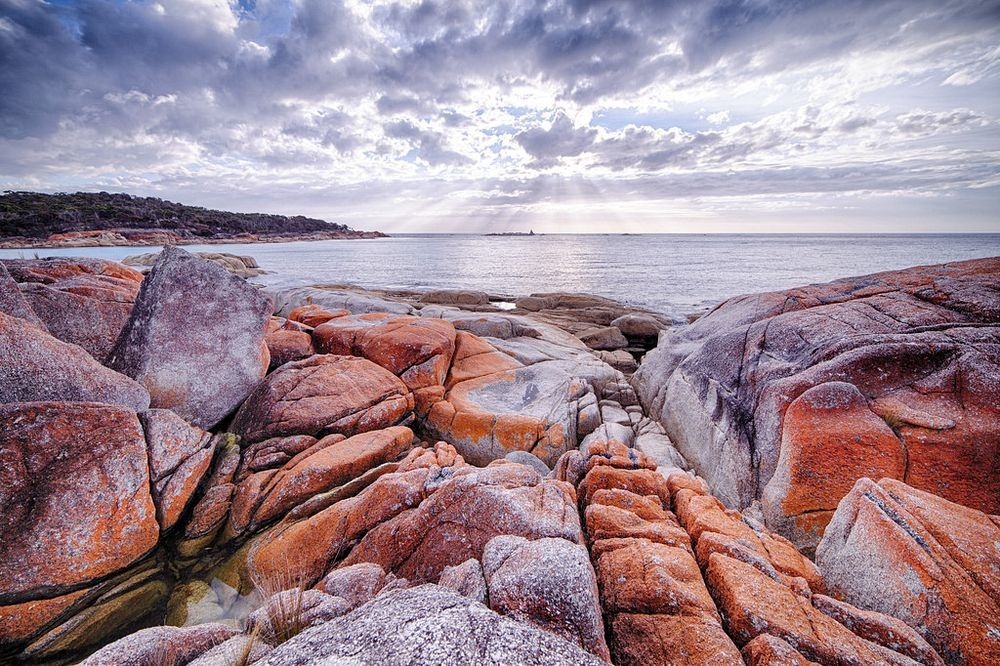The Bay of Fires, on the northeastern coast of Tasmania in Australia, is a large bay that extends for about 30 km from Binalong Bay in the south to Eddystone Point in the north. The bay was named by the British navigator and explorer Captain Tobias Furneaux, in 1773, when he noticed numerous fires along the coast, which led him to believe that the country was densely populated. Evidence of settlement by aboriginal people can still be seen along the coast.
The Bay of Fires is characterized by white beaches, blue water and huge granite blocks that are colored bright orange by lichens. Perhaps, Captain Tobias Furneaux named the bay after these fiery red rocks. Who knows?
Photo credit: Shane Lin/Flickr
Lichens are a combination of algae and fungus that live together in a symbiotic relationship. The algae provides food by photosynthesis, while the fungus provides a protected environment for the algae. The combined life form has properties that are very different from the properties of its component organisms. Lichens are classified by their fungal component and are given the same scientific name as the fungus species in the lichen, irrespective of what alga lives in the fungus.
The lichens responsible for the orange hue in the rocks of Bay of Fires belong to the family Hymeneliaceae. The color is contained in their thallus, which is the vegetative part of the body. Lichens are grouped by thallus type, since the thallus is usually the most visually prominent part of the lichen. But in some lichens, the thallus is difficult to distinguish. As a result many lichens remain unclassified.
Aside from lichens, there is a wealth of local wildlife to discover around the bay area, including birds, corals and the rich marine diversity that the reefs attract.
Photo credit: Hannah/Flickr
Photo credit: Stef2230/Flickr
Photo credit: Eli Duke/Flickr
Photo credit: Peter Gawthrop/Flickr

Photo credit: Peter Gawthrop/Flickr
Photo credit: Peter Gawthrop/Flickr
Photo credit: Shane Lin/Flickr

Photo credit: Shane Lin/Flickr
Sources: Discover Tasmania / Parks & Wildlife Service / ABC.net / Wikipedia / Gintaras Kantvilas



















I know these orange lichens from the granite of the Cape Peninsula. However, I have noticed from personal experience that fire discolours the granite with a similar hue, though it is abiological. The last photo in this article shows some of it, the darker red colour on otherwise bare surfaces. The effect is long-lasting. Some of the bonfires I set as a kid fifty years ago are still marked by reddish stains on the grey. Perhaps Furneaux saw both phenomena.
ReplyDelete